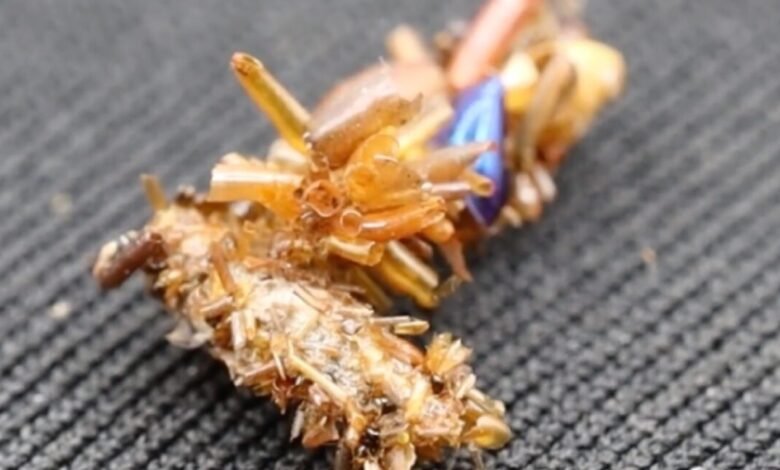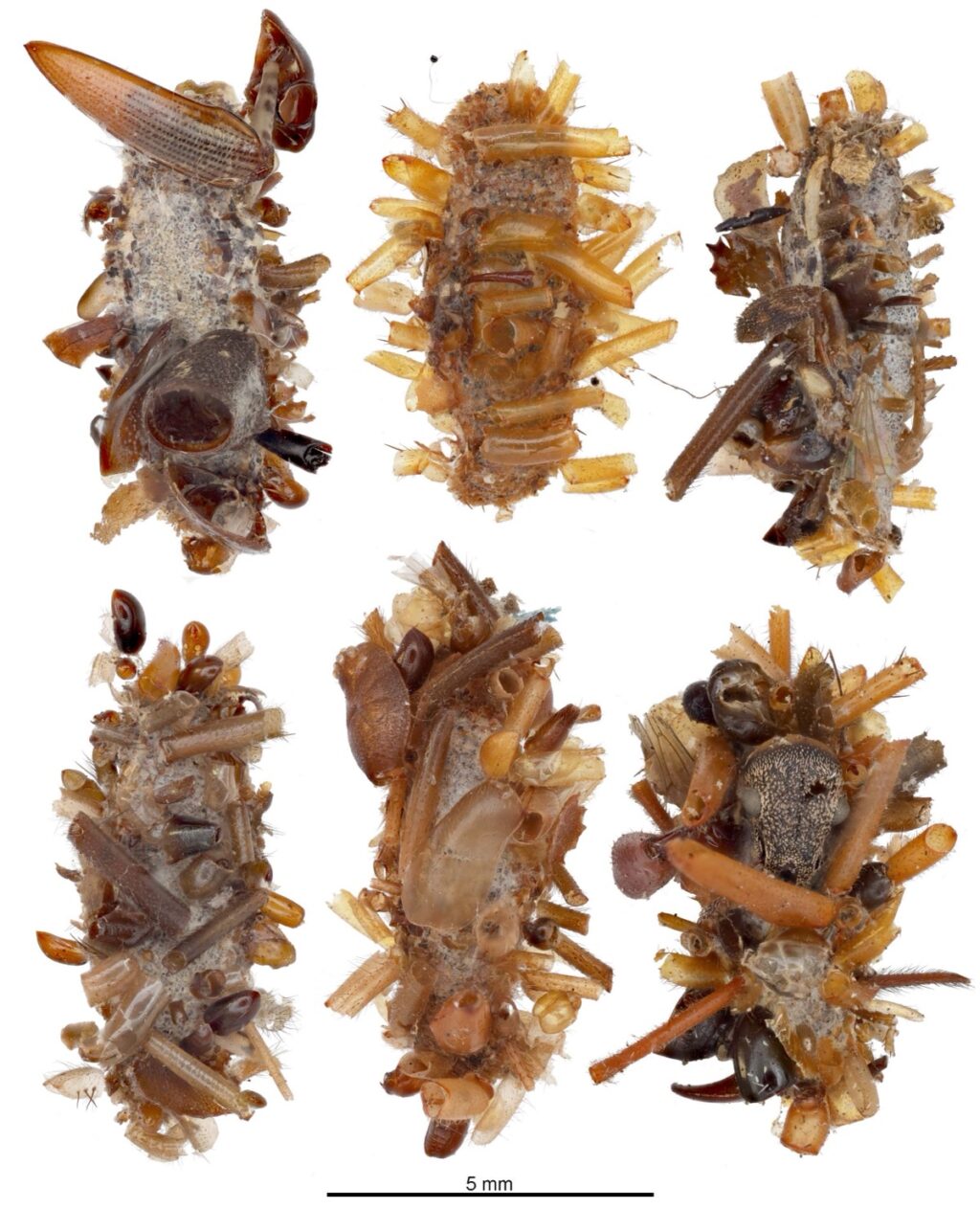Bone collector caterpillar adorns itself in insect body parts

But then the team started finding more of these caterpillars, all covered in the body parts of other insects and shed spider skins, and all in the vicinity of spider webs. “We started realizing these things are only hanging out where there are spiders,” said Rubinoff, who spent several years verifying that this was, indeed, a rare new species. “It’s the sort of thing you really want to be sure of because it’s not just incredible, it’s unimaginable.”
A genomic analysis confirmed the researchers’ suspicions and shed some light on the bone collector’s possible evolutionary pathway. The bone caterpillar may have only just been discovered by humans, but it’s at least 5 million years old and possibly as old as 12 million years, predating the island of O’ahu on which it now exclusively resides in an area of about 15 square kilometers in the Wai’anae Mountains. No other known member of the same lineage has yet been found, suggesting that the species originated on an early island in a chain that has since subsided.
Dressed for success
Why do the caterpillars do this? “It’s a decorate or die situation,” said Rubinoff. “In evolutionary history, the ones that didn’t decorate their cases were probably removed from the gene pool pretty quickly. But a few of them started incorporating bug and spider bits in their cases and survived. Selection would drive them toward having the sensory capacity to detect those bits and use them as camouflage. If you’re going to live in Smaug’s lair, you’d better look like treasure.”
Bone collector larva in web.
Rubinoff lab/University of Hawaii, Manoa

the larva resides decorated with body parts from ants, bark beetles, weevils, and flies.
D. Rubinoff et al., 2025
Pinned adult female (left) of the bone collector caterpillar and portable case (right) in which
the larva resides decorated with body parts from ants, bark beetles, weevils, and flies.
D. Rubinoff et al., 2025

Rubinoff lab/University of Hawaii, Manoa
Bone collector cases.
Rubinoff lab/University of Hawaii, Manoa
Pinned adult female (left) of the bone collector caterpillar and portable case (right) in which
the larva resides decorated with body parts from ants, bark beetles, weevils, and flies.
D. Rubinoff et al., 2025
Bone collector cases.
Rubinoff lab/University of Hawaii, Manoa
It’s a jumbled-up, messy kind of treasure, since arranging the body parts in too orderly a fashion would defeat the purpose of camouflage as they crawl around the three-dimensional cobwebs they favor. “They’re not going to do a tightrope walk between two trees; they’re hiding in a little hole in a log where there are cobwebs,” said Rubinoff. “A spider detects vibrations in the web, rushes out to grab its prey, smells itself and prey it’s already eaten, and assumes there is nothing new to eat.”
Source link







